When most travelers think of visiting Nepal, they often aim for the dry seasons in spring or autumn. However, August offers a unique and surprisingly rewarding experience for those willing to explore during the monsoon.
During the hectic monsoon rains, nature blossoms, traditional practices emerge, and amazing, untold adventures unfold in areas that many tourists do not visit. If you long for the sound of nature or the vibrant culture in August, Nepal can be wonderful, provided you are prepared and know the right places.
In this blog, we’ll guide you through everything you need to know about Nepal in August and how to enjoy Nepal’s unique charm during the rainy season.
Weather in August in Nepal
Though the monsoon is active during August, it shouldn’t keep you from planning your trip. A bit of forward thinking will allow you to see the best parts of the country that have been less affected.
- Temperature and Humidity: At night, temperatures typically fall to 20°C (68°F), with to 29°C (84°F) during the day. With humidity usually at 80%, it is a warm, bright, and lush green environment. Climbing into the hilly and mountainous areas makes the air fresh and cool.
- Rainfall: Throughout August, afternoons and evenings are often quite rainy. Kathmandu usually receives about 330mm of rain every year. Rain occasionally gets very heavy, but it tends to fall in strong bursts for short periods. Preparation is necessary since rural roads may become slippery or full of mud.
- Visibility: Mornings usually allow you to see the best view. Following rain at night, the sky can be crystal clear, allowing you to see plan misty hills and wide views. Even so, there is a chance that the higher Himalayas will be obscured by clouds.
- Rain-Shadow Regions: People who want to go trekking can explore Mustang, Dolpo, and Upper Manang. The sheltered conditions behind the Himalayas mean these places are great for monsoon trekking in Nepal.
Why Visit Nepal in August?
Even though it is the rainiest month, August draws fewer tourists and allows you to see the lush side of Nepal, its bright festivals, and fewer crowds. Having the right attitude and making good plans can make August a very satisfying time for campers.
- Lush Scenery: The monsoon makes Nepal’s hills, valleys, and forests lively and full of life. Terraces covered with dark green crops, lively waterfalls, and the distinct smell of the earth are comforting after a bit of rain. Nature lovers and photographers will enjoy Nepal at its most brilliant and colorful during August.
- Fewer Tourists: Since August is off-season, many stations and main attractions are much less crowded. Because places are quiet, you can easily have private and calm experiences. As things happen slowly, you have plenty of time to meet the locals and see everything that interests you.
- Cost Savings: As there are fewer tourists, hotels, tour operators, and travel companies tend to offer more flexible prices. If you decide to travel on a budget, you will appreciate the cost in Pokhara, Kathmandu, and Lumbini. You can try more comfortable or longer stays for much less than you would during peak times.
- Monsoon-Era Festivals: Many rich cultural celebrations held in August show how spiritual and joyful Nepal is. Despite the rain during these festivals, songs, dances, and many colors fill the streets of Kathmandu. They provide an infrequent opportunity to be part of old traditions and observe how these traditions remain vibrant.
Top Activities During August in Nepal
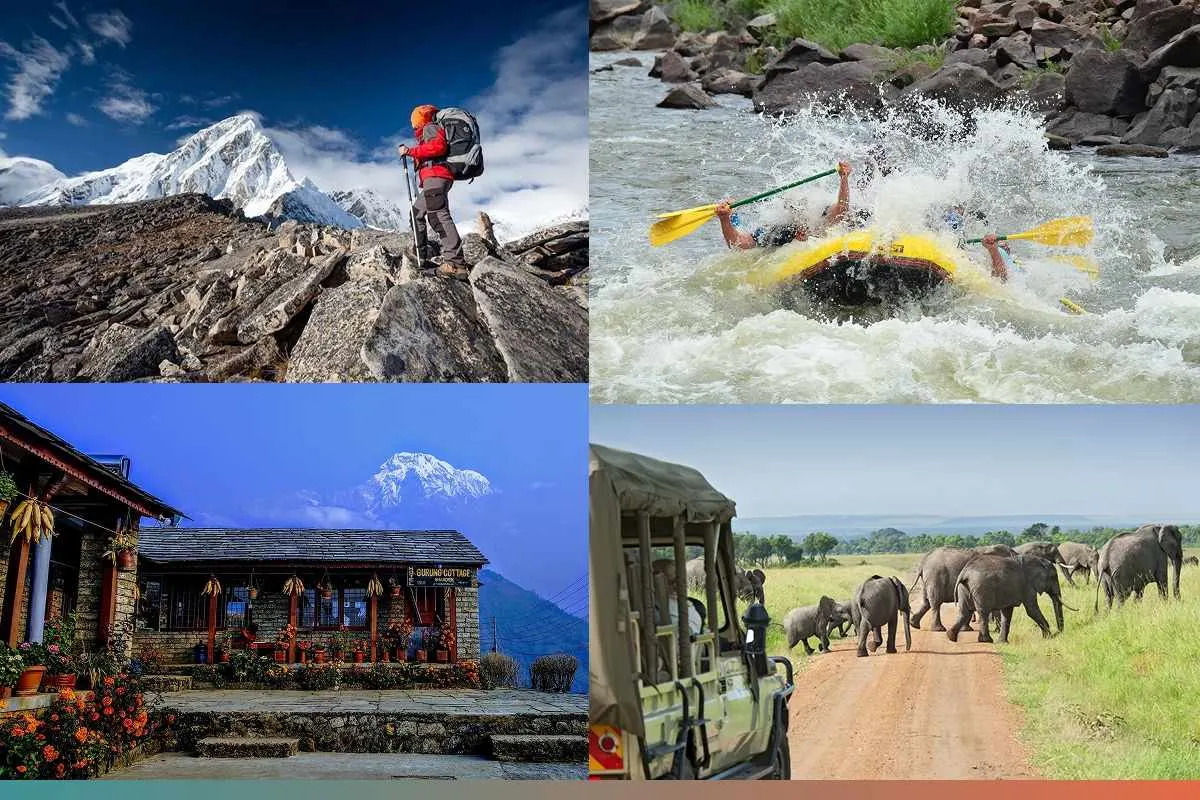
Despite all the rain at this time, there are plenty of things to enjoy in Nepal during August. Picking the best activity for the climate and region allows you to get the best out of your monsoon travel.
1. Rain-Shadow Treks
Rain isn’t a problem in Mustang, Dolpo, or Nar Phu Valley in August, so trekking here is comfortable and enjoyable at this time. Although the scenery is incredibly dry, it is both awe-inspiring, peppered with canyon-like valleys, eroded cliffs, and old cave monasteries.
A trip to Lo Manthang in Upper Mustang allows you to see Tibetan culture, old monasteries, and rugged mountains, all of which are protected by the region’s unique climate.
2. Culture & Heritage Tours
You can stay close to culture in Kathmandu Valley by marveling at ancient temples and palaces and seeing how active traditions continue throughout the monsoon. In Kathmandu, Patan, and Bhaktapur, you’ll find a lot of UNESCO World Heritage Sites, places where crafts are made by hand, and colourful festivals. Even a light rain brings more romance to walking among prayer wheels and holy places.
3. White Water Rafting & Kayaking
The floodwaters in August mean that Nepal’s rivers are ideal for exciting rafting and kayaking trips. Adrenaline seekers will find ideal rapids on rivers like Trishuli, Bhote Koshi, and Seti. With certified guides and safety gear, the experience becomes both safe and unforgettable, and won’t be something you won't forget it.
4. Wildlife Safaris
Both Chitwan and Bardia National Parks offer a fun experience even during monsoon, when the forest is full of life. Though visibility can suffer when it rains, you are likely to spot animals such as rhinos, elephants, crocodiles, and Bengal tigers once the weather is dry again. You’ll usually find that you have the whole trail all to yourself as fewer people visit.
5. Motorcycle Tours
If you like adventure, biking through Nepal’s rain-shadow regions or along its hilly routes is a great idea. Having waterproof clothing and a solid bike allows riders to travel on peaceful roads in remote areas, past farm valleys, and through the country’s rugged hills. Both well-known trails in the Mustang area and other hidden routes around the Kathmandu Valley let you experience a real sense of freedom and excitement.
6. Village Homestays
By staying in a village home, guests can experience true Nepali life, well removed from tourist areas. If you visit Bandipur, Panauti, or Tansen, you can meet local families, sample local dishes, and study traditional handicraft techniques. The presence of a monsoon during your stay brings charm, relaxing mists, beautiful flowering gardens, and peaceful times with your hosts.
Major Festivals During August in Nepal
August is a lively month for cultural celebrations in Nepal, so it’s an exciting time to join or watch traditional events. Nepal’s festivals truly reflect the national spirit, family relationships, and community life found here.
Here are some the major festivals celebrated during August:
1. Gai Jatra
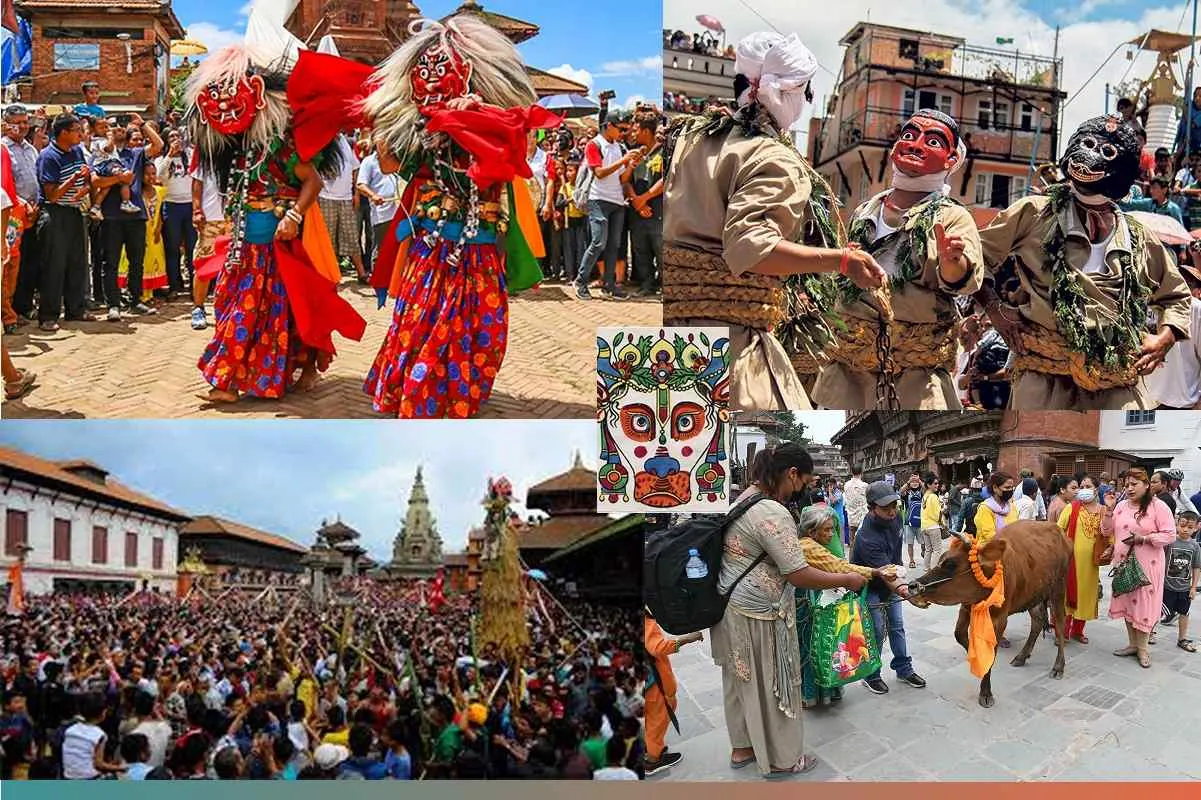
Celebrating Gai Jatra, the "Festival of Cows," neighbours bring cows and dance to placate any souls left behind after the past year. Parents choose to clothe their children as cows or gods to help spirits find their way through the afterlife. Happening in Kathmandu, Bhaktapur, and Lalitpur, the festival combines sad bits with humor to portray the special way Nepal mourns and remembers its loved ones and celebrates.
What makes Gai Jatra different is that family members use communal rituals and laughter to help them grieve. In spite of being centered on sadness, the week gives people a chance for laughter, imagination and healing together. The combination of the sacred and the comedic in Gai Jatra handles loss in Nepal with the help of the community, religion and culture.
2. Krishna Janmashtami

Through this holy festival, Hindus in Nepal and India celebrate the birth of Lord Krishna, who is much loved by many. Groups of people come to temples such as the Krishna Mandir in Patan to dance and sing bhajans, read sacred texts, and continue with praise and prayer all night. Everyone is spiritually excited during the festival, wearing flower necklaces, displaying butter lamps, and storytelling about Krishna’s life.
This event brings together people from every background, no matter their age, and they all take part with real enthusiasm. Children like to imitate Krishna and Radha in their clothing and dramas or tales are often put on to share Krishna’s stories. Because Hindus in Nepal are so devoted to Krishna, the celebration takes on a magical and joyful feel for those who participate.
3. Teej

Women in Nepal celebrate Teej in red & green, gather for rituals and dance, and fast through the occasion. Parvati, the goddess of marriage, is honoured, and the temple, the auditorium, and ritual festivities are especially important during this festival. This religion isn’t only about worship, it is a lively celebration of women, solid sisterhood, and strong resilience.
Teej is not only a religious festival, but it also honours being a woman, having a sister and being strong. Women, wherever they come from, gather to tell each other about their lives, share their concerns and bust a move to let go of their troubles. There is joy, music, and emotion in the atmosphere, so Teej is a day for women to come together and honour their faith and strength.
4. Janai Purnima
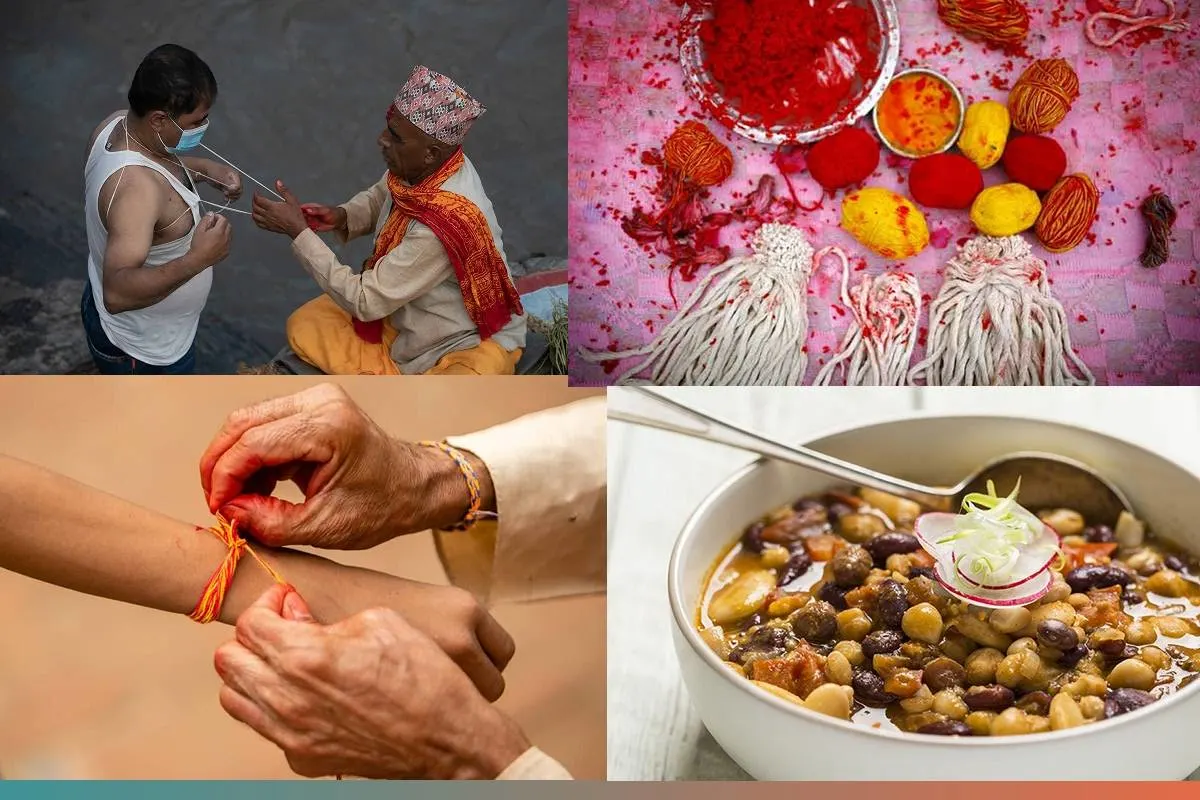
Sacred rituals and thoughts of purity make Janai Purnima a major Hindu festival celebrated in August. During Mangal Gupta, Brahmin and Chhetri men put on a new janai in preparation for a renewed commitment to their faith. During Raksha Bandhan, priests tie colourful threads on the wrists of those there, hoping the threads shield them from evil and bad luck. A lot of people come to the Kumbheshwar Temple in Patan to take part in holy dips and prayer rites.
At the same moment, different ethnic groups celebrate the day in their unique ways throughout Nepal. Gunhi Punhi is a festival for the Newars, who enjoy feasts, while Tamang and hill community members celebrate Yakuwa Punhi by placing importance on staying united and remembering their ancestors. The festival is a day for both private spiritual cleansing and the community’s celebration of religion, security and diversity.
Packing Tips
You should recognize the key things to pack for August travel. You still need warm and comfortable clothing, despite needing protective gear when it’s raining and humid.
- Clothing: Clothing made from breathable and quick-dry fabrics is very important. Take a raincoat or poncho with you instead of bulky cotton clothes.
- Footwear: Parts of the trail may be wet, so look for shoes that won’t easily get wet and have a firm grip. Because roads are often slippery, wearing shoes with anti-slip soles is very important.
- Gear: A rainproof umbrella, a dry backpack, and a pouch for your phone are smart things to have on any adventure. If you’re traveling outside the city, remember to bring both a headlamp and insect repellent.
- Essentials: Be sure to purchase travel insurance that helps in case of weather problems. Store copies of your important documents and always have cash on hand in places without many ATMs.
Travel Tips during August in Nepal
Visiting Nepal in August requires being prepared to adapt to any changes. These tips will allow you to have a better time while traveling: Be sure to begin your day as early as possible. Because most rain comes in the afternoon, you should try to complete your biggest activities before then. As a result, you’ll be able to see clear skies and not worry about heavy rain.
For any trip taking you off the beaten path, hire a speaker who knows the local area best. In the monsoon season, hiking trails might be difficult, so hiking with a local is safer. Also, they can help you make sense of traditions, particularly during holidays. Plan your trip with enough flexibility. Because delays and landslides can happen in the monsoon, you should plan buffer days around important travel. Find out about the local weather and keep an alternative activity in case it doesn’t go as planned.
Conclusion
Visiting Nepal in August offers a unique blend of peace, adventure, and cultural richness. The monsoon brings out the country’s lush beauty, while rain-shadow treks, vibrant festivals, and colorful villages reveal a side of Nepal few get to experience.
Embrace the rhythm of nature, enjoy the serenity of fewer tourists, and let the charm of August surprise you. Whether you're riding through scenic trails or exploring hidden gems, Nepal Moto Tours is here to guide your journey.
Book your monsoon adventure now with Nepal Moto Tours and discover Nepal like never before!



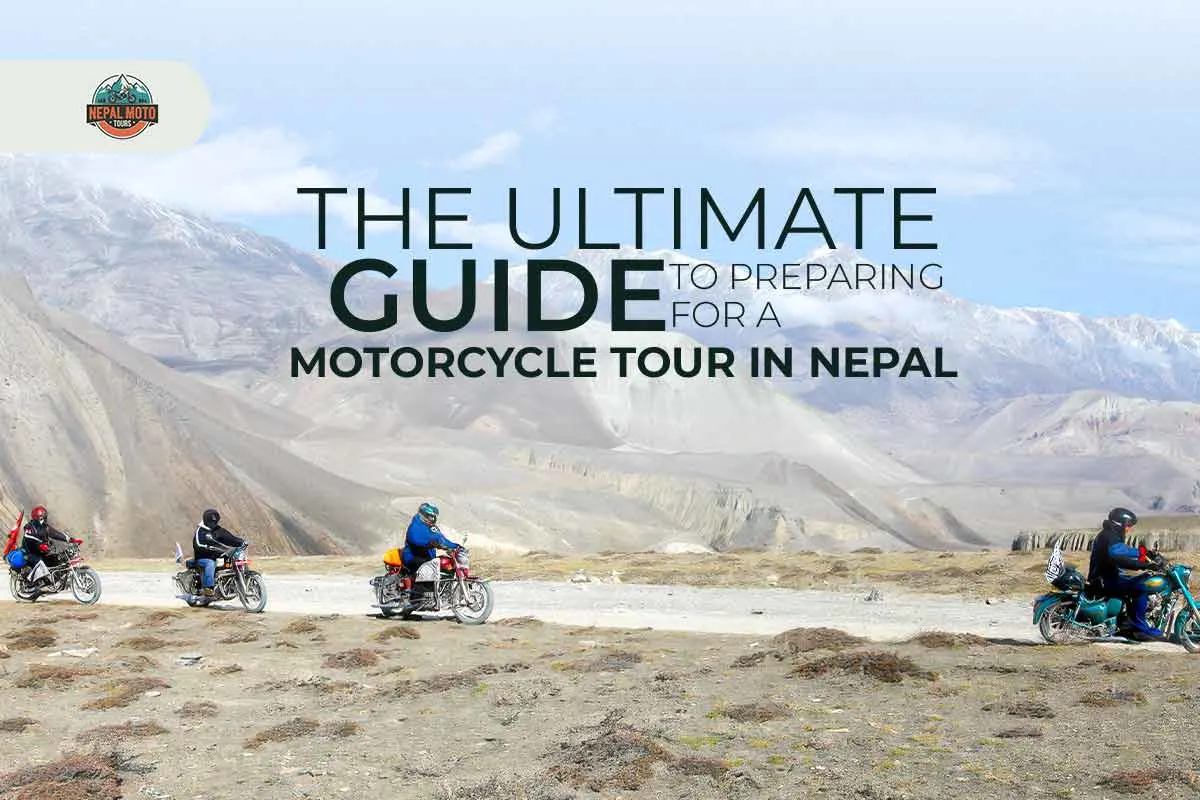
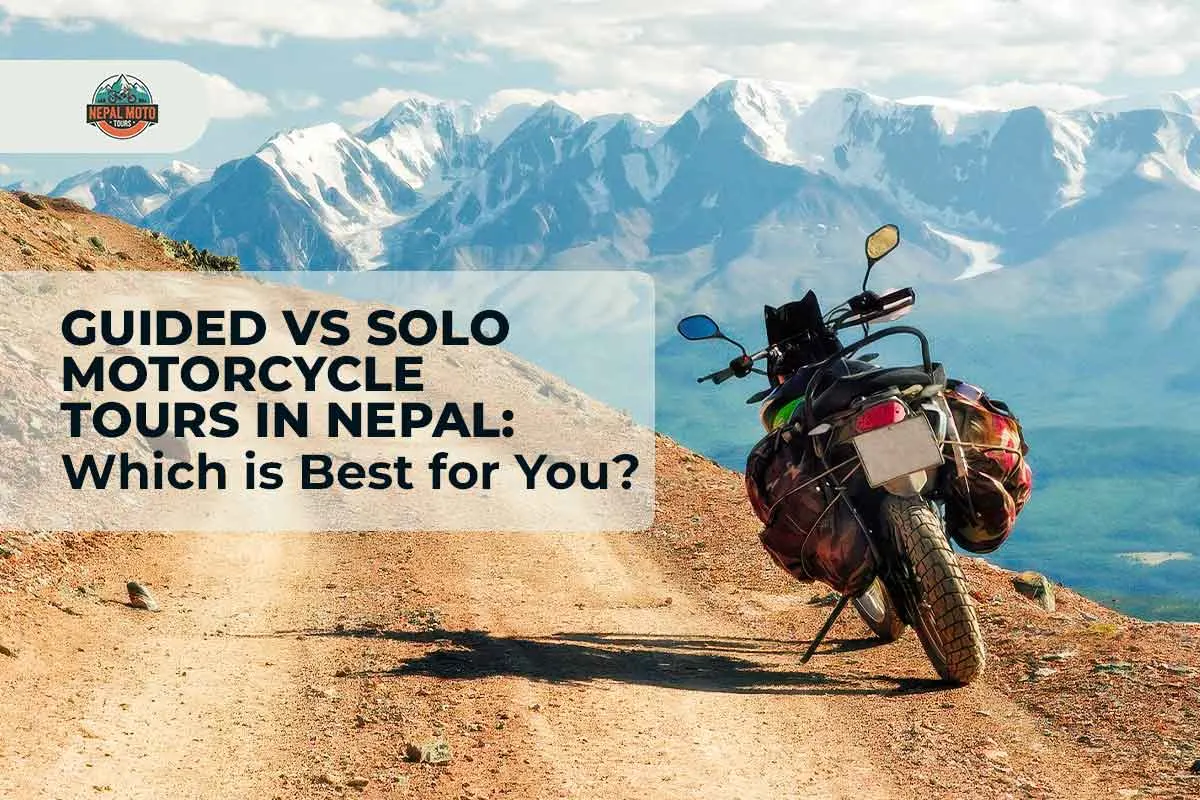

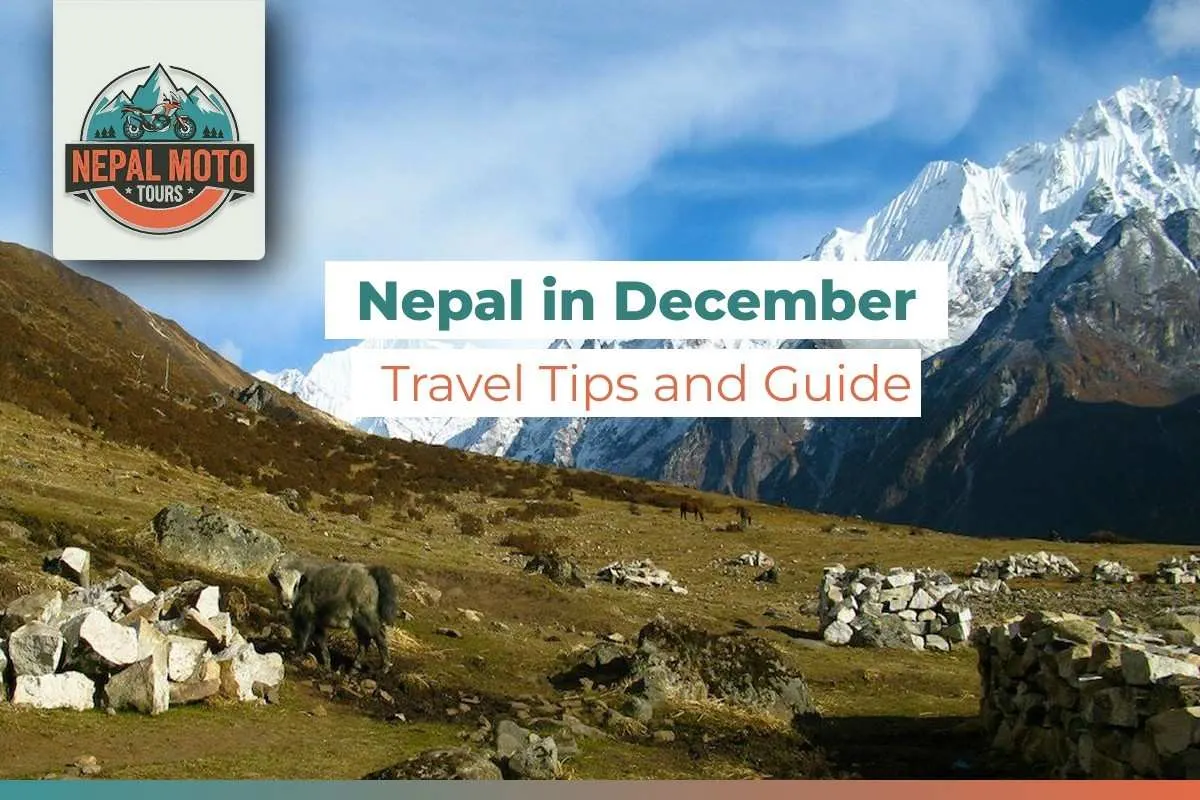
 Best places to visit in Nepal.jpg)